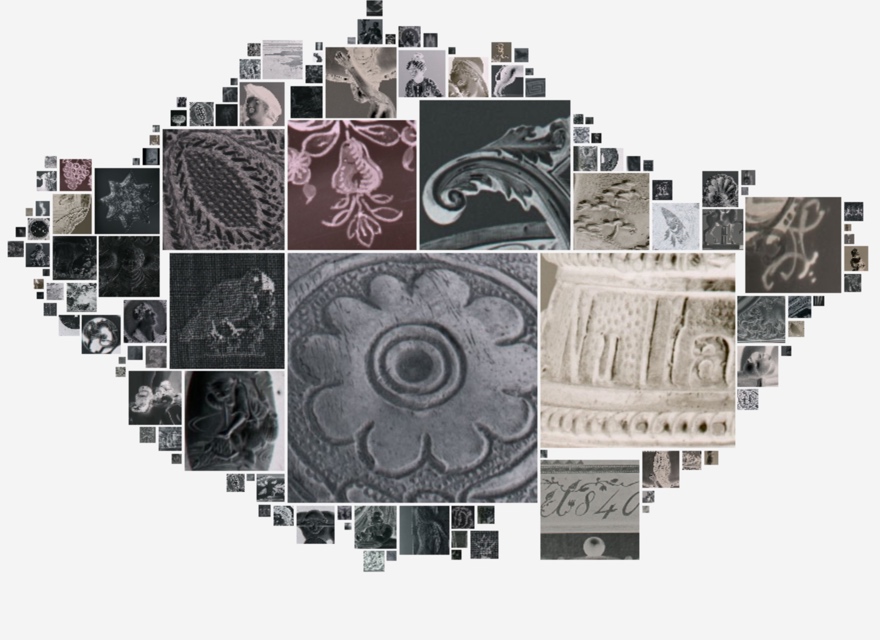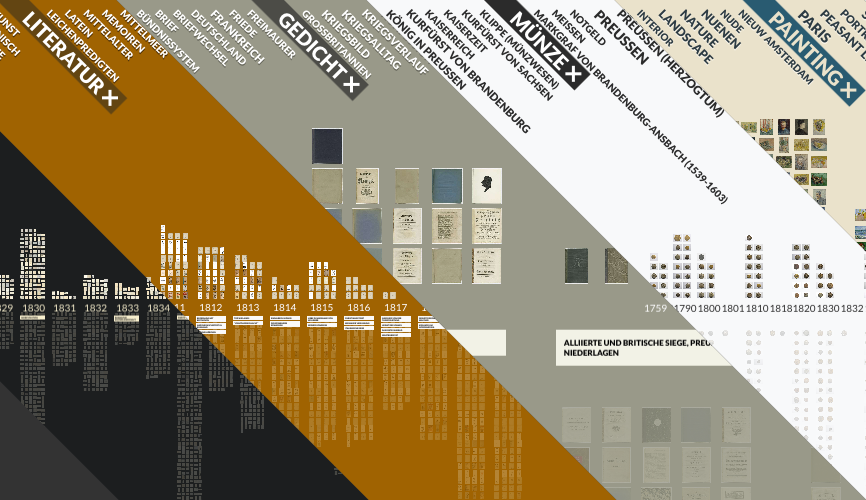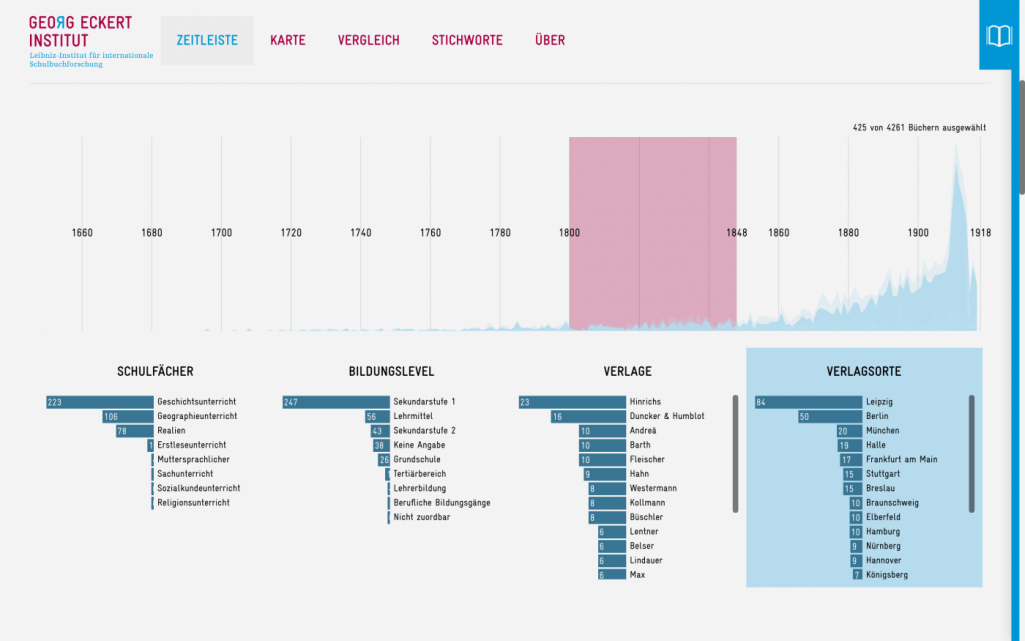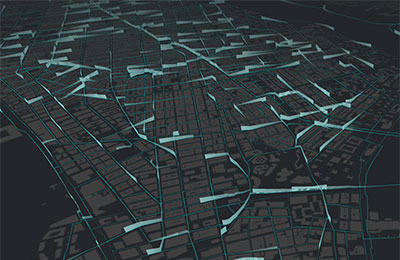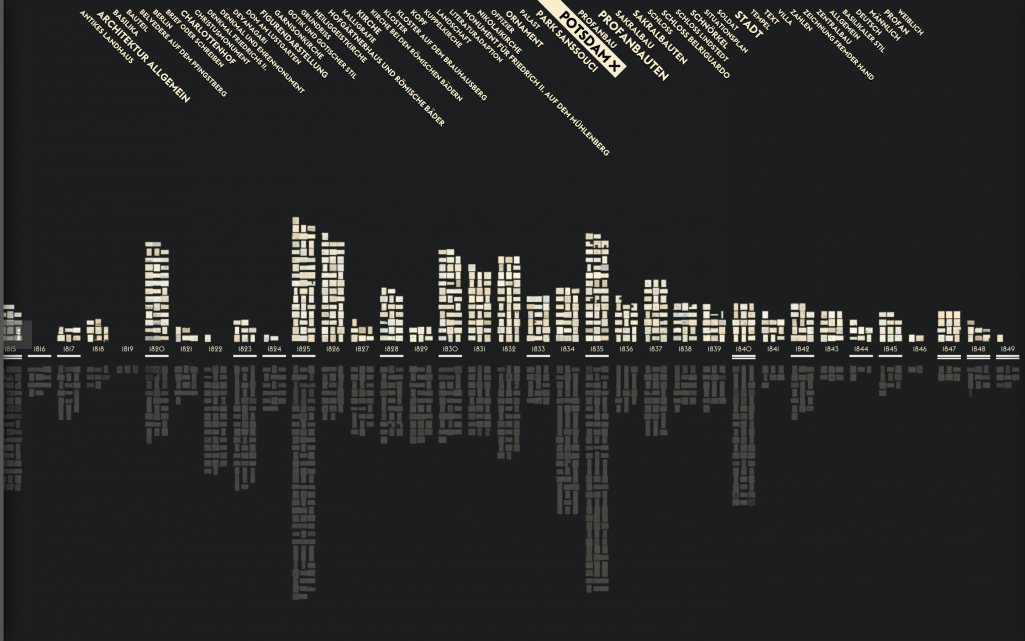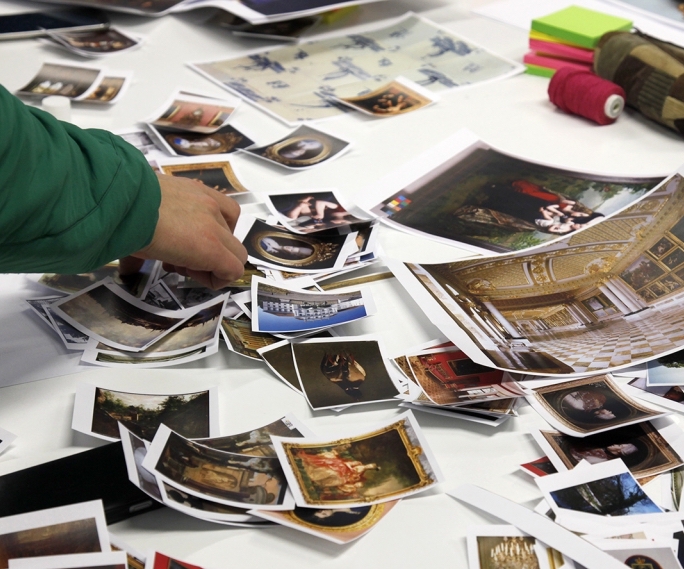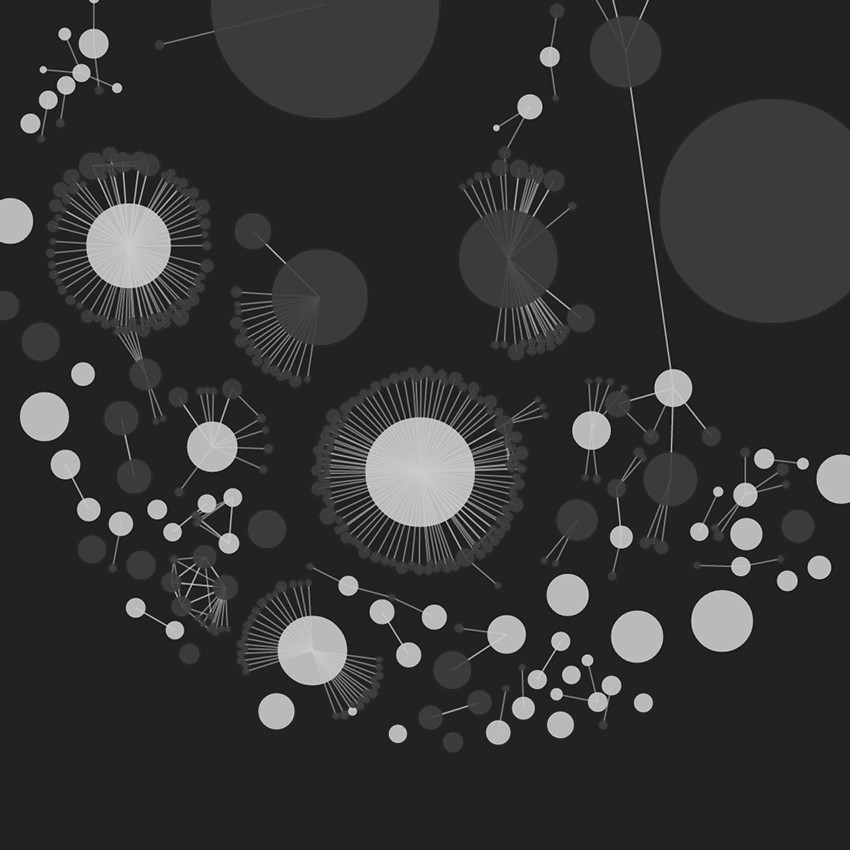Christopher Pietsch Interface Design & Visualization
Christopher is a Berlin based interaction designer who crafts unique digital experiences. His passion for interfaces goes beyond the digital layer as he tries to connect the physical with the digital world.

He studied Computer Science at the HTW Berlin, Interaction Design at the University of Applied Sciences Potsdam and holds a Bachelor’s degree for his thesis on Brain-Computer-Interfaces. As a freelance information and interaction designer he now explores novel types of visualization metaphors. Selected projects include Bumping Borders, a work of dislocative media together with Julian Oliver, NZZ Wandelhalle, a data journalism piece showing lobbying in Switzerland, and Liquidata, a multi-device visualization of personal paths in the city.
Projects Contributions
A Visual Exploration
… of two museum collections
Close-Up Cloud
Gaining a sense of overview from many details
VIKUS Viewer
Explore cultural collections along time, texture and themes
GEI-Digital Visualized
Visualizing a digital library of historical textbooks
cf. city flows
A comparative visualization of urban bike mobility.
PAST VISIONS
penned by Frederick William IV
VIKUS
Visualizing Cultural Collections
Deutsche Digitale Bibliothek visualisiert
How does a cultural collection of over 7 million objects look like?
Publications Published Works
Von der Wolke zum Pfad: Visuelle und assoziative Exploration zweier kultureller Sammlungen
Die in den letzten Jahren entstandenen explorativen Visualisierungen musealer Sammlungen widmen sich zumeist einzelnen Sammlungen, welche oft einer spezifischen Systematik folgen und eine geringe Vielfalt an Objektgattungen und Attributen aufweisen. Das hier vorgestellte Forschungsprojekt stellte sich die Frage, wie verschiedene, in sich heterogene, Sammlungen miteinander verknüpft, visualisiert und exploriert werden können, ohne die Unterschiede zwischen ihnen zu nivellieren. Dazu wurden im Rahmen einer Forschungskooperation mit den Staatlichen Museen zu Berlin die Bestände aus dem 19. Jahrhundert der Alten Nationalgalerie sowie des Museums Europäischer Kulturen ausgewählt. Das Ziel war es, übergreifende Zusammenhänge und Resonanzen zwischen den Sammlungen aufzugreifen und dynamische, interaktive Arrangements zu entwickeln, welche die assoziative Exploration von Beständen anregen. Das Ergebnis ist ein interaktiver Prototyp, der eine globale Übersicht in Form einer annotierten Wolke mit der lokalen Perspektive eines auf Ähnlichkeiten basierten Pfads verknüpft.
Visuelle Exploration zweier musealer Sammlungen
Die Neukonzeption der Online-Sammlungen der Staatlichen Museen zu Berlin ist eines der wichtigsten und umfassendsten Projekte innerhalb des Teilprojekts Visitor Journeys neu gedacht. Ziel ist es, die Objekte der Staatlichen Museen zu Berlin auch im virtuellen Raum angemessen und zeitgemäß zur Verfügung zu stellen. Die Forschungskooperation mit dem Urban Complexity Lab der Fachhochschule Potsdam ist Teil dieser Neukonzeption, indem sie die Möglichkeiten der Visualisierung und Exploration heterogener Sammlungsbestände untersucht. Mit Methoden aus dem Interfacedesign, der Human-Computer-Interaction und der Informationsvisualisierung wurden in einem interdisziplinären Team innovative und relevante Zugänge erforscht und prototypisch umgesetzt. Als Ziel wurde formuliert, dass die Sammlungen der Staatlichen Museen zu Berlin in ihrer heterogenen Zusammensetzung erfasst und die verschiedenen Objektarten, Fachdisziplinen und Spezifika im Ganzen und im Detail visualisiert werden. So sollte ein Überblick über die Vielfalt der Bestände der Staatlichen Museen zu Berlin verdeutlicht, aber auch ein Einstieg in die spezifischen Zusammensetzungen der Sammlungen ermöglicht werden.
One view is not enough: High-level visualizations of a large cultural collection
As cultural institutions are digitizing their artifacts and interlinking their collections, new opportunities emerge to engage with cultural heritage. However, it is the often comprehensive and complex nature of collections that can make it difficult to grasp their distribution and extent across a variety of dimensions. After a brief introduction to the research area of collection visualizations, this paper presents a design study visualizing an aggregated collection from diverse cultural institutions in Germany. We detail our iterative design process leading to prototypical implementations of four stylistically and functionally coordinated visualizations, each one focusing on different facets of the collection.
Past Visions and Reconciling Views: Visualizing Time, Texture and Themes in Cultural Collections
We present a case study on visualizing a collection of historic drawings along its metadata structure while also allowing for close examination of the artifacts’ texture. With regards to the specific character of cultural heritage at the intersection of research, education, and public interest, the presented visualization environment aims at meeting the requirements of both researchers as well as a broader public. We present the results from a collaborative interdisciplinary research project that involved a cultural heritage foundation, art historians, designers, and computer scientists. The case study examines the potential of visualization when applied to, and developed for, cultural heritage collections. It specifically explores how techniques aimed at visualizing the quantitative structure of a collection can be coupled with a more qualitative mode that allows for detailed examination of the artifacts and their contexts by displaying high-resolution views of digitized cultural objects with detailed art historical research findings. Making use of latest web technologies, the resulting visualization environment allows for dynamic filtering and zooming of a collection of visual resources that are arranged along a contextualized timeline. We share insights from our collaborative design process and the feedback and usage data gathered during the deployment of the resulting prototype as a web application. We end with a discussion of transferability of carefully crafted and collaboratively negotiated visualizations of cultural heritage and raise questions concerning the applicability of our approach to related strands of humanities research.
Von sammlungsspezifischen Visualisierungen zu nachnutzbaren Werkzeugen
Die Entwicklung digitaler Werkzeuge lässt sich als wichtiger Teilbereich in den Digital Humanities identifizieren (Davis und Kräutli 2015; Schnapp et al. 2009). Entsprechende Forschung und Projektarbeit steht dabei komplexen Herausforderungen gegenüber. Nicht nur die Frage nach verfügbaren Daten, methodologischer Fundierung und technologischer Umsetzbarkeit, sondern auch die Frage nach deren langfristigen Verfügbarmachung sind wiederkehrende Themen der letzten Jahre. Eine zentrale Rolle für die Sicherstellung von Qualität und Anwendbarkeit der digitalen Werkzeuge ist die Einbindung von Forscher_innen der jeweiligen geisteswissenschaftlichen Disziplinen im Entwicklungsprozess (Drucker 2013). Gleichzeitig lässt sich die zentrale Bedeutung von Interfacedesign, Nutzungsanleitungen und Benutzerfreundlichkeit als wichtige Faktoren für die Etablierung von digitalen Werkzeugen im Forschungsprozess feststellen (Gibbs und Owens 2012). Doch selbst wenn diese Herausforderungen bewältigt werden und ein digitales Werkzeug (erfolgreich) entwickelt wurde, stellt sich weiterhin die Frage, wie die langfristige Nachnutzung im Sinne einer digitalen Nachhaltigkeit sichergestellt werden kann. Am Beispiel des Entstehungsprozesses einer sammlungsspezifischen Visualisierung und deren Weiterentwicklung zu einem nachnutzbaren Werkzeug werden einige zentrale Aspekte der beeinflussenden Faktoren und Lösungsansätze vorgestellt. Unser Beitrag stellt sich somit der Frage, wie sichergestellt werden kann, dass digitale Tools auch über die Laufzeit von Förderprojekten hinaus (und unabhängig von spezifischen Use-cases) dauerhaft nutzbar und weiterentwickelbar sind.
Staged Analysis: From Evocative to Comparative Visualizations of Urban Mobility
In this paper we examine the concept of staged analysis through a case study on visualizing urban mobility exhibited in a public gallery space. Recently, many cities introduced bike-sharing in order to promote cycling among locals and visitors. We explore how citizens can be guided from evocative impressions of bicycling flows to comparative analysis of three bike-sharing systems. The main aim for visualizations in exhibition contexts is to encourage a shift from temporary interest to deeper insight into a complex phenomenon. To pursue this ambition we introduce cf. city flows, a comparative visualization environment of urban bike mobility designed to help citizens casually analyze three bike-sharing systems in the context of a public exhibition space. Multiple large screens show the space of flows in bike-sharing for three selected world cities: Berlin, London, and New York. Bike journeys are represented in three geospatial visualizations designed to be progressively more analytical, from animated trails to small-multiple glyphs. In this paper, we describe our design concept and process, the exhibition setup, and discuss some of the insights visitors gained while interacting with the visualizations.
Linking structure, texture and context in a visualization of historical drawings by Frederick William IV (1795-1861)
In this article we present a case study on digital representation of the art historical research and metadata brought together for a scientific collection catalogue by the Prussian Palaces and Gardens Foundation Berlin-Brandenburg. The resulting interface aims at linking the structure and texture of a collection of drawings by Frederick William IV of Prussia (1795–1861) with additional contextual information. The article describes the context of the larger research project and presents the resulting visualization and interaction techniques specifically designed for dynamic exploration along time and subjects.


